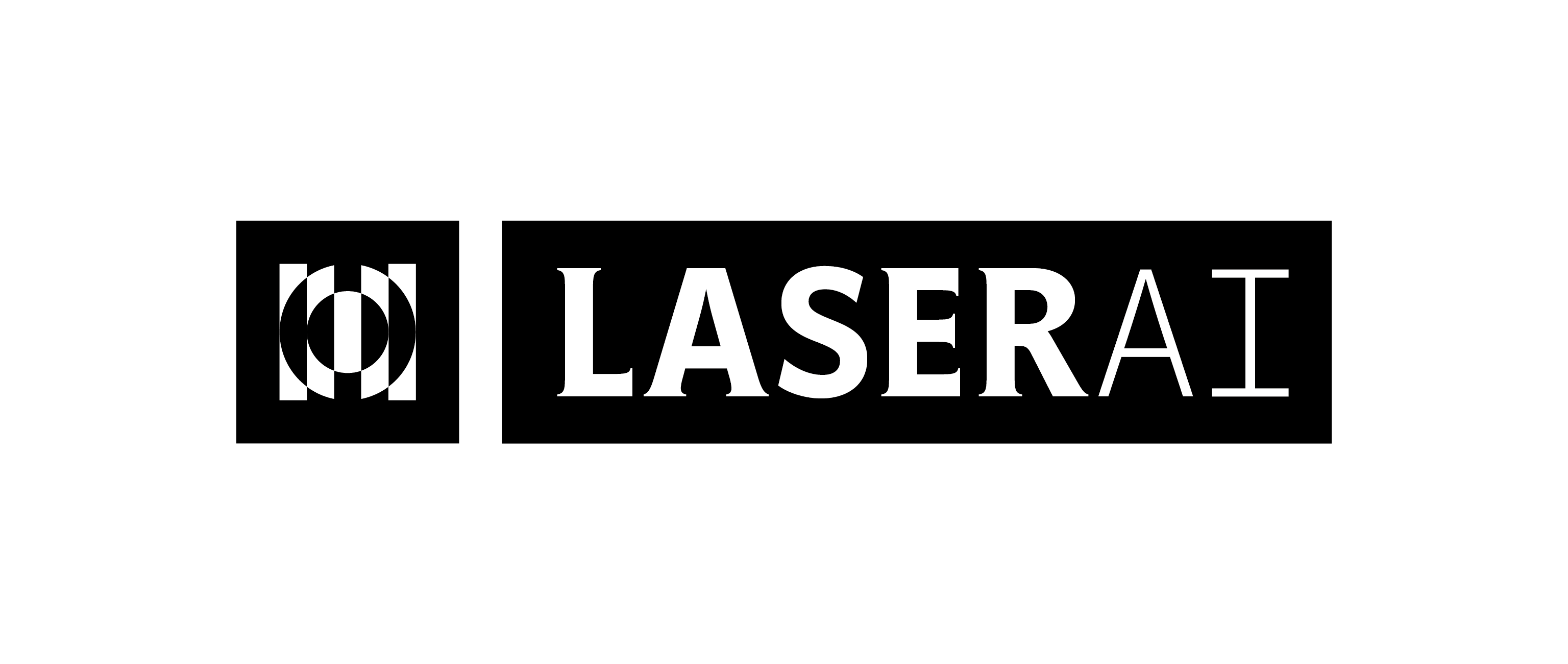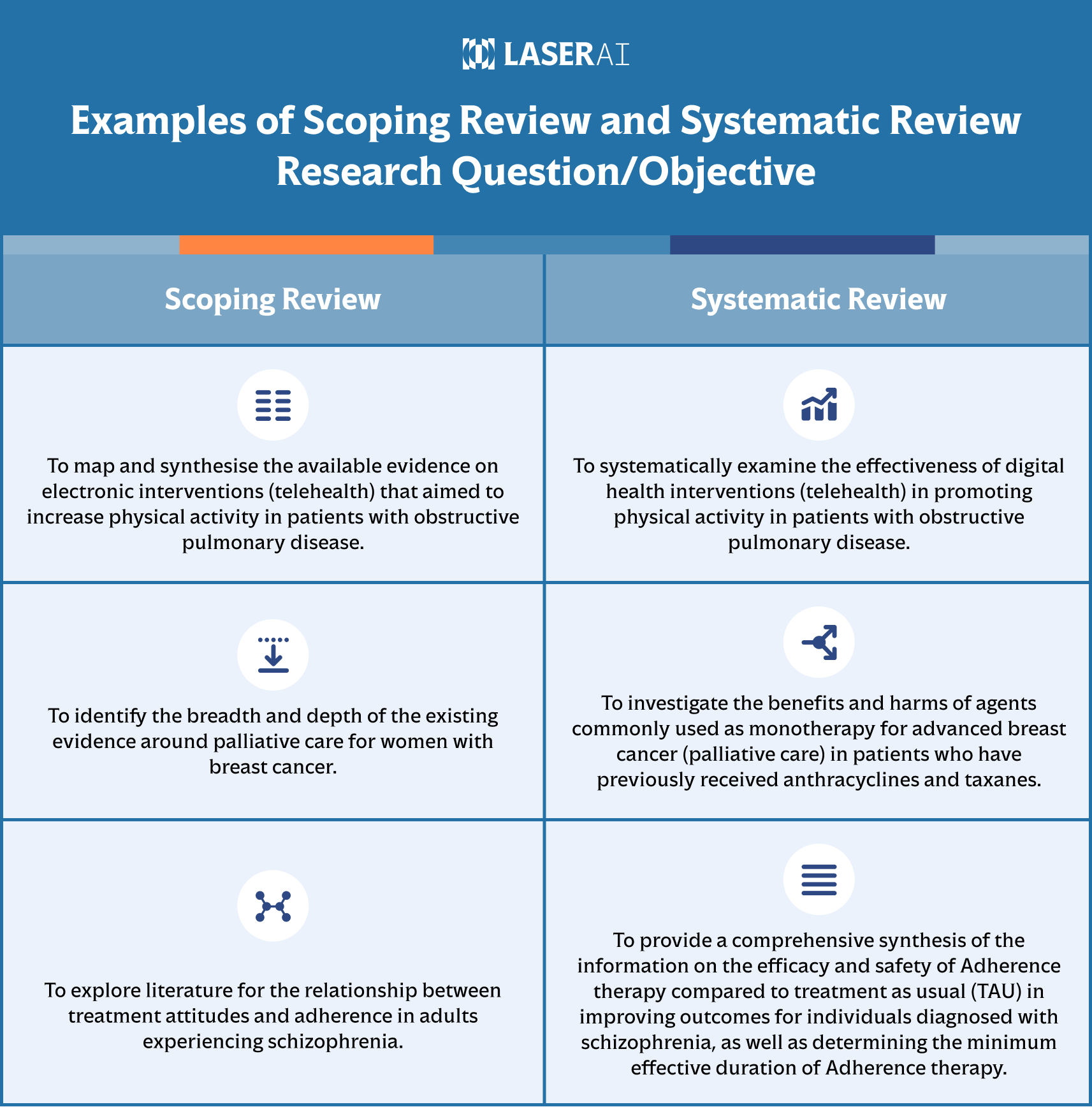
|
|
Thank you for Signing Up |
Note: It is our responsibility to protect your privacy and we guarantee that your data will be completely confidential.



Resources > BLOG >
February 8, 2024
When conducting research, different approaches are employed to gather and analyze relevant information. Two commonly used methods are scoping reviews and systematic reviews.
A scoping review is a methodological approach to map and summarize existing literature on a particular topic. It is a less rigorous process than a systematic review. Still, it can be a valuable tool for researchers trying to get a broad overview of the available evidence by identifying key concepts, sources, and research gaps.
On the other hand, a systematic review is a more rigorous process that aims to summarize the findings of primary research studies that address a specific research question. Systematic reviews critically appraise the included studies, often using statistical methods to synthesize the results.
While both studies aim to gather evidence, their methodologies and research questions differ.
The main difference between a scoping review and a systematic review lies in their research questions. A scoping review typically focuses on broad research questions to explore the breadth and depth of existing literature on a topic. It provides a comprehensive understanding of the field. In contrast, a systematic review addresses narrow research questions, offering more precise answers based on a thorough analysis of available evidence. Here is an example of each:

The difference between scoping and systematic reviews extends beyond their research questions.
The scoping review methodology involves several important steps:
The results are presented transparently and in a reproducible manner.
Scoping reviews are becoming more popular as a research method, and they are increasingly used to guide research priorities and uncover policy or practice implications. However, there is a concern with how scoping reviews are reported, leading to inconsistent quality assessment and difficulty understanding their findings.

The methodology of a systematic review is more structured and rigorous:
The findings are reported transparently and in a reproducible manner.
While both methodologies share a similar process of literature search, study selection, and data extraction, systematic reviews are known for their higher methodological rigour. Systematic reviews require more stringent quality assessment and risk of bias appraisal. They often involve meta-analysis for quantitative data synthesis, making their conclusions more focused and precise. Even though data extraction can be incredibly tedious, technology is available - like Laser AI that can assist in extracting data and minimizing bias in 50% less time than traditional manual labour.
By searching on PubMed, systematic reviews are more prevalent in published literature than scoping reviews. In 2022, 40166 systematic reviews were found, compared to 5942 scoping reviews. However, over the last decade, despite the rise in systematic reviews, a notable and more significant growth has been observed for scoping reviews.
This could be attributed to the perception that systematic reviews provide more specific answers than scoping reviews. Although scoping reviews are undermined for their lack of depth, they offer valuable insights into the breadth and extent of existing evidence, highlighting research gaps and informing future investigations.
While systematic reviews are specific, scoping reviews appear to be the most suitable approach when our research aim is to provide a comprehensive overview of a topic, map existing literature, identify key concepts and gaps, and inform future research directions. This method allows for a systematic examination of a wide range of sources, thereby facilitating a more holistic understanding of the subject matter.


As mentioned, systematic reviews take a long time to complete, often taking months or years. AI tools like Laser AI can save time by organizing search results, managing references, and assisting with screening and data extraction processes. Despite the methodological rigor differences, scoping and systematic reviews share certain processes. Therefore, the AI tools dedicated to systematic reviews can also be used to support the conduct of scoping reviews. Laser AI helps researchers, analysts, professors, and governmental bodies in their quest for reliable and trustworthy evidence to inform their decisions and actions.
Scoping and systematic reviews are two distinct methodologies for gathering and synthesizing evidence on specific research questions. While scoping reviews explore the breadth and depth of existing literature, systematic reviews provide detailed answers through a rigorous and comprehensive process. Scoping and systematic reviews are crucial in advancing knowledge and informing evidence-based decisions. Understanding the differences and nuances between these approaches helps researchers choose the suitable method for their research goals.
.jpg)
As a passionate writer with a strong drive for strategic growth, Shelby leverages storytelling techniques to provide value for Evidence Prime's audience.

Evidence Synthesis Specialist with 15 years of experience in conducting HTA reports, systematic reviews, and targeted literature reviews. At Evidence Prime, she provides methodological knowledge to the designers and the software development team.
Related webinars:
Related blog posts:

Systematic reviews and meta-analysis are rigorous methods for combating misinformation. Inform your decision-making by following reporting guidelines.
READ MORE